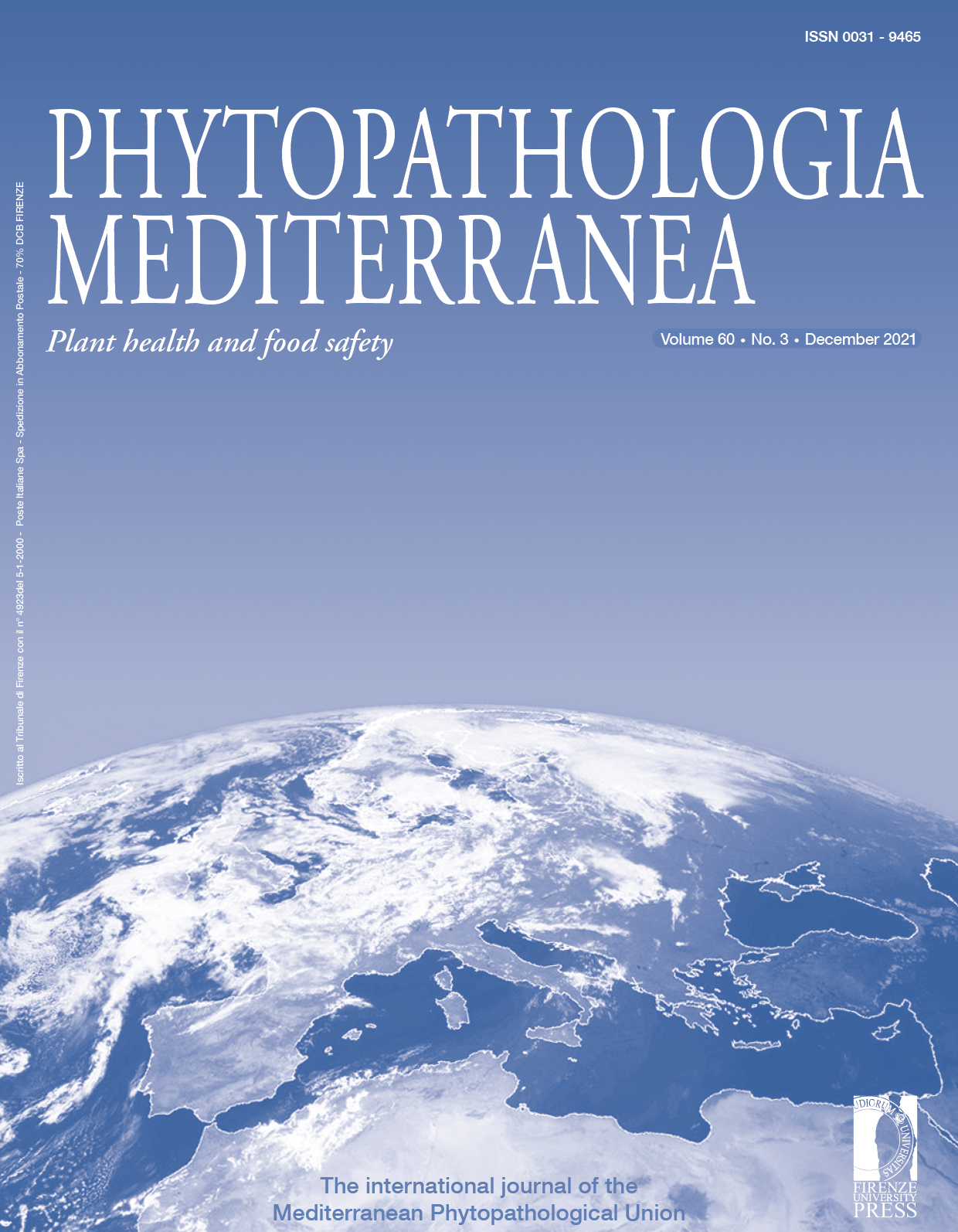High-density ‘Spadona’ pear orchard shows reduced tree sensitivity to fire blight damage due to decreased tree vigour
Published 2021-11-15
Keywords
- Erwinia amylovora,
- fire blight,
- high-density orchard,
- Pyrus communis
How to Cite
Abstract
Fire blight, caused by Erwinia amylovora, is a severe disease of pear (Pyrus communis). Highly vigorous trees are more sensitive to E. amylovora damage after summer pruning. Trees grown in high-density orchards have lower vigour than those in low-density orchards, reducing required inputs for pruning and tying, and increasing per hectare yields orchard profitability. Tree damage due to fire blight was assessed in high-density pear orchards vs. the common Israeli low-density orchards. Pear trees were planted at high densities using the spindle system (2500 trees ha-1 for ‘Spadona’ and 1250 trees ha-1 for ‘Coscia’), or at low density (1000 trees ha-1) using palmeta (’Spadona’) or open vase (‘Coscia’) systems. Four years after planting, both orchards were similarly infected with fire blight (11–50 infected blossoms per tree), but 1 year after infection, trees in the high density orchard had blossoms infections in the main limbs or trunk bases compared to the low-density orchard. At 3 years after initial infection, no trees had died in the high density orchard, whereas in the low density ‘Spadona’ orchard, 10% of the trees were wilted. For the more tolerant ‘Coscia’, infection did not progress at either orchard density. These results indicate that in fire blight-susceptible pear cultivars, a high density planting system, associated with reduced tree vigour, presents a decreased risk of fire blight damage.
Downloads
References
Cooley D.R., Autio W.R., 2011. Summer pruning of apple: impacts on disease management. Advances in Horticultural Science 25: 199–204. https://www.jstor.org/stable/42882838
Cooley D.R., Gamble J.W., Autio W.R., 2007. Summer pruning as a method for reducing fly speck disease on apple fruit. Plant Disease 81: 1123–1126. https://apsjournals.apsnet.org/doi/10.1094/PDIS.1997.81.10.1123
Ferree D.C., Warrington I.J., 2003. Apples: Botany, Production and Uses. CABI. https://www.cabi.org/ISC/ebook/20033083468
Johnson K.B., 2000. Fire blight of apple and pear. The Plant Health Instructor. https://doi.org/10.1094/PHI-I-2000-0726-01
Majid I., Khalil A., Nazir N., Majid I., 2018. Economic analysis of high density orchards. International Journal of Advance Research in Science and Engineering 7: 821–829. https://www.researchgate.net/profile/Insha_Majid/publication/343097407
Norelli J., Aldwinckle H., Momol T., Johnson B., DeMarree A., Reddy M.V.B., 2000. Fire blight of apple rootstocks. New York Fruit Quarterly 8: 5–8. https://nyshs.org/wp-content/uploads/2016/10/Fire-Blight-of-Apple-Rootstocks.pdf
Norelli J.L., Holleran H.T., Johnson W.C., Robinson T.L., Aldwinckle H.S., 2003. Resistance of Geneva and other apple rootstocks to Erwinia amylovora. Plant Disease 87: 26–32. https://doi.org/10.1094/PDIS.2003.87.1.26
Robinson T.L., 2004a. Effects of tree density and tree shape on apple orchard performance. In VIII International Symposium on Canopy, Rootstocks and Environmental Physiology in Orchard Systems. Acta Horticulturae 732: 405–414. https://www.actahort.org/books/732/732_61.htm.
Robinson T.L., 2004b. High density pear production: an opportunity for NY growers. New York Fruit Quarterly 18. https://fruit.webhosting.cals.wisc.edu/wp-content/uploads/sites/36/2016/03/1.High-Density-Pear-Production-An-Opportunity-for-NY-Growers.pdf
Robinson T.L., DeMarree A.M., Hoying S.A., 2004. An economic comparison of five high density apple planting systems. In VIII International Symposium on Canopy, Rootstocks and Environmental Physiology in Orchard Systems. Acta Horticulturae 732: 481–489. https://www.actahort.org/books/732/732_73.htm
Shtienberg D., Zilberstaine M., Oppenheim D., Levi S., Shwartz H., Kritzman G., 2003. New considerations for pruning in management of fire blight in pears. Plant Disease 87: 1083–1088. https://doi.org/10.1094/PDIS.2003.87.9.1083
Stern R.A., Doron I., 2009. Performance of ‘Coscia’ pear (Pyrus communis) on nine rootstocks in the north of Israel. Scientia Horticulturae 119: 252–256. https://doi.org/10.1016/j.scienta.2008.08.002
Stern R.A., Doron I., Rede G., Raz A., Goldway M., Holland D., 2013. Lavi 1—a new Pyrus betulifolia rootstock for ‘Coscia’ pear (Pyrus communis) in the hot climate of Israel. Scientia Horticulturae 161: 293–299. https://doi.org/10.1016/j.scienta.2013.04.040
van der Zwet T., Beer S.V., 1995. Fire blight – its nature, prevention, and control: a practical guide to integrated disease management. US Dept. Agric. Info. Bull. No. 631. https://doi.org/10.5962/bhl.title.134796
Vanneste J.L., Eden-Green S., 2000. Migration of Erwinia amylovora in host plant tissues. In: Fire Blight: the Disease and Its Causative Agent, Erwinia amylovora. CABI, pp. 73–83.







